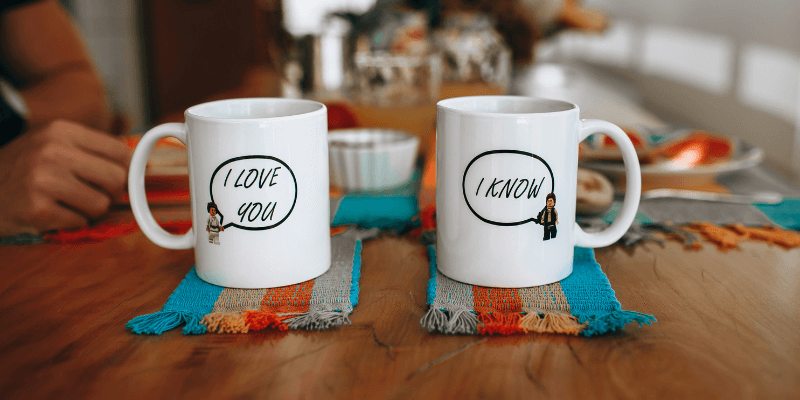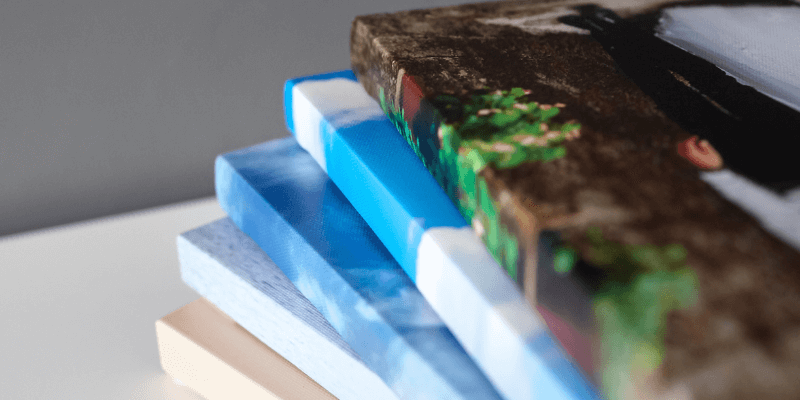The Difference Between POD Fabric Types
In the early days of print-on-demand (POD), screen-printing was the go-to choice to bring designs to life. The technology dates back over 1,000 years & works by pushing one ink at a time through silk screens & onto a material like paper or fabric. Although effective, screen printing is too slow & expensive to mass-produce products. When it comes to customizing garments, screen-training is also limited to fabrics like cotton.
Sure, screen printing looks great. But today, it’s possible to branch out & explore the different types of fabrics & materials that work well with POD. Here’s a round-up of where to start & how to choose the best method for you.
Cotton
Cotton is versatile, comfortable to wear, durable enough to last years, & easy to customize. Many POD sellers use Direct-to-Garment (DTG) technology as an inexpensive way to mass-produce their cotton clothing & accessories.
However, there are some drawbacks to using DTG on cotton garments. It leaves some of the more popular product sellers, like hoodies & activewear, falling flat. When you use DTG for mass production, you’re likely to get inconsistent colors & are limited to where you can print on a garment. On the upside, DTG is quick & a winner for one-off product customizations. Embroidery is also another option for cotton. For example, an embroidered polo shirt offers an upscale touch to your ecommerce store.

Polyester
Polyester is a type of fabric made from synthetic woven fiber. Like cotton, it’s also durable & relatively inexpensive to produce. Polyester is commonly used to make jackets, shirts, bags, & outdoor activewear. Some polyesters are also created to draw moisture away from the body, known as quick wick fabric.
Soft, quick wick fabric is wildly popular for outdoor enthusiasts activewear buyers, but it’s not always easy to apply designs with POD technology. One way is by using sublimation, which involves heat & pressure to turn the ink into gas. Next, the design is transferred from its original paper onto another surface, like a porous or hard surface.
There are some drawbacks. When you use sublimation with fabrics, it’s limited to white polyester. You also need to use an edge-to-edge pattern, which isn’t practical for a graphic T-shirt. The color usually looks great, but sublimation has a higher error rate & is tricky to apply evenly. On the other hand, the technique can look fantastic & work well on mugs & water bottles.
We wanted better results for our CustomCat customers, so we adopted DIGISOFT®, a proprietary print technology that commands vibrant, consistent color & extends the print longevity. DIGISOFT® is versatile, more accurate, works with complex designs, & can be used on various materials, including quick-wicking activewear. You can also use DIGISOFT® on cotton garments.

Blended Fabrics
As the name implies, blended fabrics combine more than one material. Cotton & polyester blends are commonly used to keep costs down, create durable garments, & keep the person wearing it ultra comfortable. Blended fabrics are also used for bags, towels, & fabric accessories.
Your design & the fabric you choose usually dictates which type of POD technology to use. DTG or sublimation may be a good choice, but DIGISOFT® is a reliable winner for stunning, consistent designs applied to fabrics.
Other POD Materials
Beyond fabrics, you can also use POD to customize different materials, including ceramic & stainless steel. Here’s a look at other products you can sell, & which POD technology to choose.
Ceramic
Ceramic is made from various materials, including clay, powders, & corrosion-resistant materials. They’re shaped & then fired in a high-temperature oven to create products like coffee mugs & vases.
Mugs & other ceramics are relatively easy to customize with sublimation due to printing edge-to-edge design patterns. Depending on the drinkware selection, we also offer dishwasher & microwave-safe mugs. The exception is our Color Changing Mugs that also use sublimation but aren’t dishwasher safe.

Stainless Steel
Stainless steel creates durable products, retains less odor, & is an eco-friendly alternative to plastic. It’s commonly used to create water bottles, cutlery, & cookware. Stainless steel is also less likely to hold onto flavors, making it a better choice than plastic when it comes to water bottles.
Dye sublimation is also commonly used to jazz up print-on-demand water bottles. Like mugs, you can use edge-to-edge design patterns to create a winning look.
Canvas
Canvas is made from a blend of cotton & polyester & sometimes coated with a satin finish. Some canvas products could include shoes or decorative pillows. Our POD sellers create custom artwork with our deluxe canvases that come in a variety of colors.
We use UV printing on our canvas wall hangings to quickly dry the ink or coatings nearly instantaneously. Your design hits your canvas & dries quickly to create a gorgeous look. They’re also abrasion-resistant to keep the surface looking flawless.

MDF
MDF, or medium-density fibreboard, is a type of engineered wood. It’s created by breaking down soft or hard wood into fiber residuals combined with wax & resin. The final product undergoes high heat & pressure. MDF is commonly used in inexpensive furniture & flooring but can also be used to create POD housewares, like ornaments or coasters.
CustomCat’s POD ornaments are made with MDF. But we add a high-gloss plastic finish for a more durable design. We use edge-to-edge sublimation & add a gold cord for easy hanging. They’re also not just for the holidays. From simple circles to hearts, they’re a year-round excuse to celebrate a special (& personalized) occasion.

Regardless of which fabric or material you use for your customized products, use the best POD technology on the market to produce high-quality designs. You’ll likely find DIGISOFT® stands out from the competition, even on the softest, quick-wicking fabrics. For other products like mugs & stainless steel water bottles, sublimation may be your best bet.
What are your favorite POD types or materials? Let us know by leaving a comment below!


